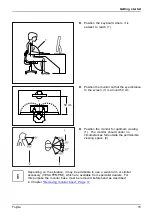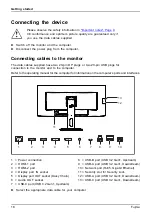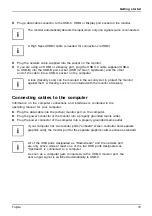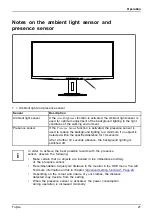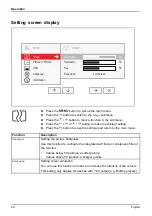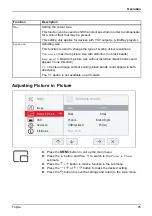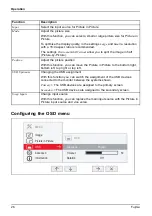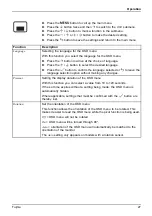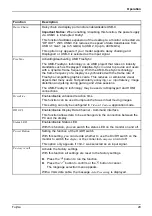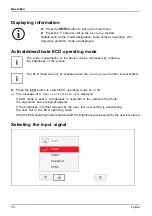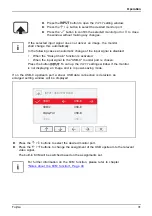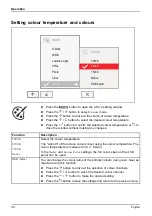
Getting started
►
Plug a data cable connector to the USB-C, HDMI or Display port socket on the monitor.
The monitor automatically detects the input when only one signal source is connected.
A High Speed HDMI cable is needed for connection via HDMI.
►
Plug the network cable supplied into the socket on the monitor.
►
If you are using an HDMI or a Display port, plug the USB 3.0 cable supplied (USB-A
to USB-B) into the USB-B port socket (USB 3.2 Gen1, Upstream) and the other
end of the cable into a USB-A socket on the computer.
A lock (Security Lock) can be mounted in the security slot to protect the monitor
against theft. A Security Lock is not included with the monitor at delivery.
Connecting cables to the computer
Information on the computer connections and interfaces is contained in the
operating manual for your computer.
►
Plug the data cable into the (active) monitor port on the computer.
►
Plug the power connector of the monitor into a properly grounded mains outlet.
►
Plug the power connector of the computer into a properly grounded mains outlet.
If your computer has two monitor ports ("onboard" screen controller and separate
graphics card), the monitor port for the separate graphics card is active as standard.
All of the USB ports designated as "Downstream" and the network port
are only active while at least one of the two USB ports designated as
"Upstream" is connected to a computer.
As soon as a computer gets connected via the USB-C monitor port, the
active input signal is switched automatically to USB-C.
Fujitsu
19











